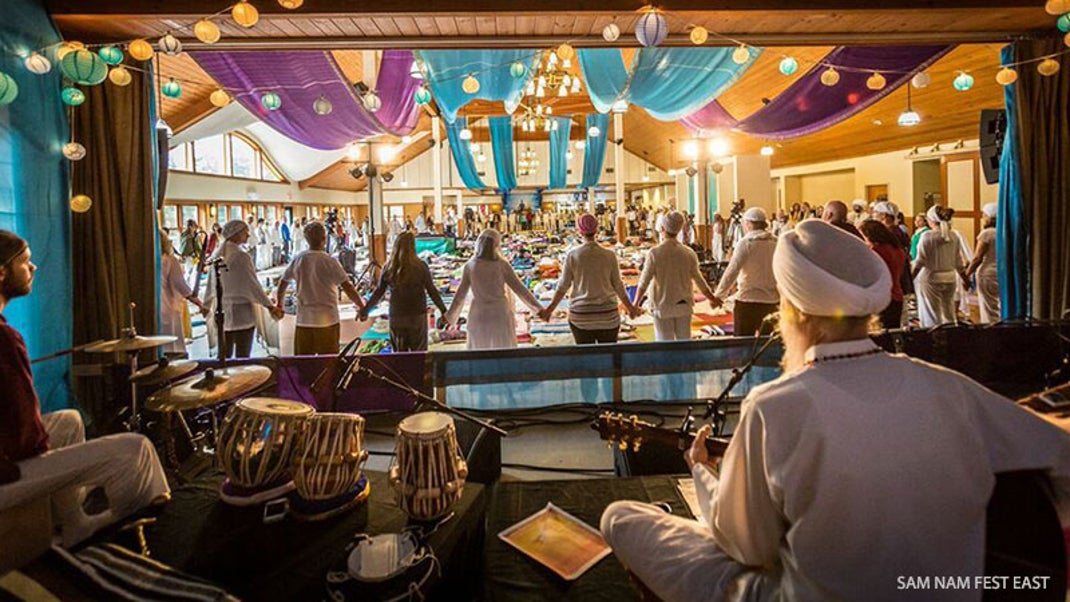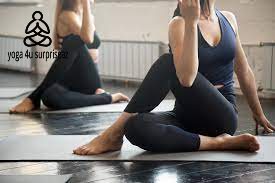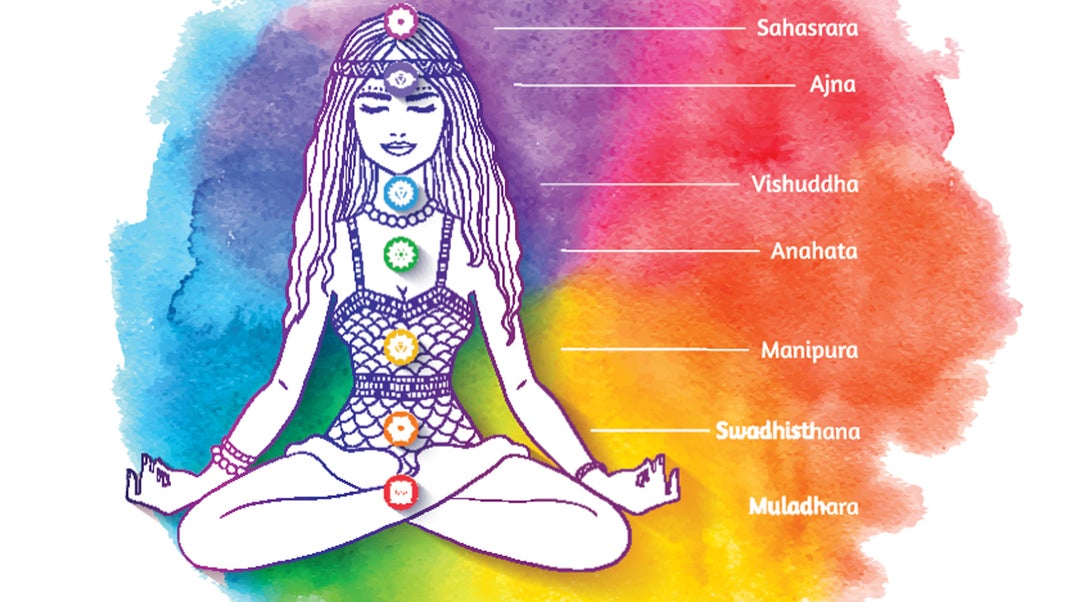It’s no secret that yoga is a great way to stay in shape, but what many people don’t realize is how much it can also help you grow spiritually. Yoga teaches us not only about the physical body, but the spiritual one as well.
How does this happen? How can something so simple have such profound effects on our lives and our minds? In today’s article, we’ll take a look at some of the amazing benefits of practicing yoga and how it leads to transformation.
Has yoga changed your life? It’s pretty likely since just about everyone who practices yoga has been touched in some way by its transformative power. Maybe you simply feel better in your body. Perhaps you’ve experienced more profound changes in your life, relationships, and worldview. But because these changes often take place over time, as part of a subtle and organic process, it can sometimes be hard to pinpoint exactly what it is about yoga that helps you to live a better life.
ParaYoga founder and Tantra scholar Rod Stryker say that to truly understand why yoga is so transformative, you first have to understand the concept of transformation. The idea that yoga changes you into someone better than the person you were before is something of a misconception, Stryker says. It is more accurate to say that yoga helps you remove the obstacles that obscure who you really are, that it helps you come into a fuller expression of your true nature. “We’re not transforming into something we aspire to,” he says. “We’re transforming into the very thing that we are innate: our best Self.”
One way yoga encourages transformation is by helping you to shift patterns you’ve developed over time, patterns that may be unhealthy, Stryker says. When you put your body into a pose that is foreign and you stick with it, you learn how to take a new shape. Taking this new shape with the body can lead you to learn how to take a new shape with the mind. “If practiced correctly, yoga asana breaks down the psychological, emotional, physical, energetic, and psychic obstacles that inhibit us from thriving,” Stryker says.
Yoga also teaches you how to make better decisions. Everything about practicing yoga involves intention—you set apart time in your day to do it, you move in a specific manner, breath in a specific way. And when you are mindful and deliberate in your yoga practice, you create the opportunity to become more mindful and deliberate in your life. “The people who stick with yoga realize that they make decisions that are more constructive than destructive,” Stryker says. “I often tell my students that one of two things will happen after you do yoga for a few years: Either you will begin to change for the better, or you will stop doing yoga.”
Perhaps most important, your yoga practice allows you a glimpse of the joyful and free person you can be, says Anusara Yoga teacher Sianna Sherman. Practicing asana, she says, shows you that you can accomplish things you never thought you could. “At first, we think, ‘There’s no way I am going to be able to do a Handstand.’ And then, in little increments, we start to gain this confidence. And then all of a sudden we can do it.” When you’re lying in Savasana at the end of a yoga practice, after you have worked hard and felt thoroughly present and connected to your body, that sense of joy and freedom you experience is an expression of your true nature. Even though it may be fleeting, it shows you what is possible.
The following stories are examples of yoga’s transformative power. They are the stories of four people in unusually difficult circumstances who, through yoga, were able to find the strength, confidence, presence, and discipline to change their lives for the better. May they inspire you to trust in the practice and in the answers that arise from getting to know your own Self.
The Power of Presence
“If I thought too much about what had happened, I would get sad and angry, and I couldn’t forgive the mistakes that had been made. If I thought too much about the future, that was too overwhelming. But if I stayed right in the present moment, I could handle things with grace and with ease.”
In 2003, Julie Peoples-Clark, an Ashtanga and Bikram yoga practitioner living in Baltimore, was in her ninth month of a healthy pregnancy in which she practiced yoga every day, ate well, and took good care of herself. When she went into labor, she went to the birthing center where she had intended to have a natural birth, but nothing went as planned. As a result of difficult labor and mistakes made by the birthing center, her daughter, Ella, was born with spastic quadriplegia cerebral palsy. Doctors said she would never be able to walk, talk, or even sit up on her own. After Ella’s birth, Julie abandoned her yoga practice and spent the next two years wrestling with anger and depression. But through reconnecting with and deepening her yoga practice, Julie learned to let go of what might have been and to see the beauty of what was actually before her.
When Ella was nearly two, Julie took her to a program called Yoga for the Special Child in Encinitas, California, which she had seen advertised just days after Ella’s birth and finally felt ready to explore. Founder Sonia Sumar offered some yoga practices for Ella and introduced Julie to Patanjali Yoga Sutra. At Sumar’s encouragement, Julie began to spend 15 minutes a day on her mat, combining a gentle asana practice with reading the Yoga Sutra and meditating. These small blocks of time shifted Julie’s experience of her circumstances profoundly. “Just being on my mat, in my sacred space, and focusing on my breath put me in the present moment. If I thought too much about what had happened, I would get sad and angry, and I couldn’t forgive the mistakes that had been made. If I thought too much about the future, that was too overwhelming. But if I stayed right in the present moment, I could handle things with grace and with ease.”
The more Julie took this time for herself, the more present she became in all aspects of her life, including in her interactions with her daughter. She started to see Ella as a gift and a treasure. “I feel like I missed two years of my daughter’s life when she was a baby,” Julie says. “I was so goal-oriented, and I wanted her to be well. But sitting down on the yoga mat with her made me realize how rich my experience was. I have a beautiful daughter who is achieving amazing things every day.”
Ella is now seven years old, and Julie has become an advocate for children with disabilities as well as a yoga teacher for disabled children and adults. When she reminds her students to stay present with what is, she is speaking from a place of experience. “One of the hardest things about Ella’s birth injury and disability was, and at times still is, thinking about what could have been: my life with a healthy child, birthday parties, dance lessons, Mommy and Me yoga classes,” Julie says. She credits studying the Yoga Sutra with helping her to release attachment to what might have been, and for helping her gain acceptance and gratitude for what is.
“The sutras helped me gain the insight that my ego is creating my suffering by wanting what I do not have,” she says. “My life is so incredibly rich and purposeful. I have a reason to get out of bed each day. I have a supportive, very sweet husband and a wonderful network of friends and family, all of whom have been touched deeply by beautiful, amazing Ella.”
Life on Purpose
“When you hold poses for a while, you have time to get where you want to be. That’s how I feel about life now. If you are slow and mindful, you tend to be more focused on your goals and intentions.”
In 1999, Stacy Meyrowitz was a sociable 32-year-old living a fast-paced life in Manhattan, booking artists and celebrities to appear on the VH1 network. Her life changed overnight when she suffered a brain hemorrhage, and she suddenly found herself facing significant cognitive impairment and months of recovery. Yoga helped Stacy get her life back and taught her the value of living with intention.
In the hospital after the hemorrhage, Stacy was calm and peaceful, she says. But as she slowly began to regain cognitive function, she became increasingly frustrated by her inability to comprehend simple things. She was easily confused, disoriented, and a step behind everyone else, both physically and mentally.
“My memory, balance, spatial relations, and concentration were all impaired,” she says. “I’d gotten black and blue from bumping into walls. I would get lost in the city—I couldn’t figure out that I was going uptown when I actually wanted to go downtown. I had no interest in my friends, in my career. It was all just too much work.”
Feeling disconnected from everything in her former life, Stacy dropped into an Anusara Yoga class. Right away, she was drawn to the way the teacher asked everyone to line up their mats. The idea of order felt reassuring, she says. The teacher went on to give specific anatomical instructions that Stacy found she could follow. “I craved that kind of instruction like someone who hadn’t had food or water,” Stacy says. “It was simple stuff I could totally focus on and go slow and do.”
She started taking a beginners’ Anusara Yoga class every day at the same studio and found that the clear, mindful asana instruction improved her memory, spatial relations, focus, and sense of connectedness with her mind and body. But on a greater scale, she says, the daily practice showed her the value of acting deliberately. She learned that, on the mat, patience and focused intention translated into more precision in poses; off the mat, those qualities resulted in living in a more deeply satisfying way. “When you hold poses for a while, you have time to get where you want to be,” she says. “That’s how I feel about life now. If you are slow and mindful, you tend to be more focused on your goals and intentions.”
Today, Stacy, who now works in real estate and is preparing to do yoga teacher training, sees the effects of her yoga practice in every part of her life. She describes herself as more patient, precise, and detail-oriented than she was before her brain injury, and able to make better business decisions. Her eating habits have changed—she ate fast food before the hemorrhage but now loves to cook, spending long stretches of time shopping for food, chopping vegetables for the week, and packing food to take to work. And she spends more time deepening her relationships with longtime friends, rather than filling her calendar with events involving big groups of casual acquaintances. The common thread, she says, is that she lives her life with a greater sense of purpose and intention. In some ways, she says, she feels like a completely different person from the one she was before the hemorrhage. “But I feel this person had to have always been here.”
For Your Own Sake
“I learned to do yoga for me, to discipline myself for my own benefit.”
Larry Sherman had survived a lot: substance abuse, a near-death experience as a naval petty officer in Desert Storm, and a divorce that left him with the responsibility of raising his children. But no problem seemed as insurmountable as his weight, which at his heaviest exceeded 540 pounds. Through yoga, Larry found the inner strength to turn his life around.
Larry’s overeating began as a way to cope with loneliness, depression, and post-traumatic stress disorder. “I refused to go back to alcohol, so food was it for me,” he says. “And I ate with a fury. I would wake up in the morning and go to the bagel place and eat two or three bagels and drink a cup of coffee. On the way home, I’d purchase two or three dozen doughnuts. Then I’d drive straight to the China Buffet and eat there for two hours, and then go home and eat my doughnuts. I was sick and tired, and I couldn’t breathe. I was spending every night waiting to die.”
Larry had been in and out of food-addiction programs over the years, and in 2006, at age 47, he decided to try again. “I knew I had to make the decision to either live or die,” he says. “I chose to live.” But he knew that just changing his eating habits wouldn’t be enough. One day at a health fair, he met a yoga teacher who encouraged him to try yoga. Larry started attending classes at Yoga Shelter in Detroit, where his teacher and fellow students had to help him into the poses at first by supporting his arms and legs. “I couldn’t walk. I couldn’t even stand for long periods of time,” he says. “And here I was, 480 pounds, and doing a Half Moon Pose.” He kept going to classes and, to his disbelief, found himself doing Pigeon Pose, and then Boat Pose.
His size made the poses difficult and sometimes painful, but his teachers urged him to keep practicing. “Each time I did, I got more flexible and wowed myself with what I could actually do if I breathed and tried and never gave up on myself,” he says. As asana became a regular part of his life, Larry discovered that his body was capable of moving with grace, and even of providing him with moments of pleasure. He found his self-confidence increasing—and with it the will to stick with the food-addiction program, something he hadn’t been able to do in the past. Over the next six months, he dropped 100 pounds. “You don’t want to abuse your body when you know how good it can feel,” he says. “When you have felt the magnificence of your body in a vinyasa class or a slow flow class, then you know that you’re making a bad choice when you eat 10 pieces of fried chicken or half a pizza.”
Today Larry weighs 180 pounds and works in a drug and alcohol rehabilitation hospital, where he mentors young adults. “Yoga teaches you how to parent yourself, to take care of yourself,” he says. “I was in the military, so they teach you to be disciplined for them. But I learned to do yoga for me, to discipline myself for my own benefit.”
Discover the True You
“One day, I was sitting in Lotus position with my eyes closed, and I saw someone sitting in front of me, looking back at me. It was a beautiful woman. And I thought, ‘Oh my God, is that who I am?’”
At 40, Rachel Eliason is a registered nurse, a budding writer, and the loving mother of a 12-year-old son. But just four years ago, she was living her life as someone she wasn’t—someone named Richard. Yoga and meditation gave Rachel the insight to connect with the truth of who she really was, and the courage to embrace living her life as that person.
Rachel was born a biological male and as an adult had gotten married and fathered a child, but she had struggled all of her life with confusion about her gender identity. After her divorce five years ago, she tried living life as a gay man but still felt unsettled. “It was obvious that this wasn’t the answer,” she says. “I was still dealing with someone else. I wasn’t dealing with me.”
Rachel had had a regular yoga and meditation practice for years, but she began spending more time with her practice, seeking answers and trying to connect with who she was. It was in meditation, she says, that she was able to see herself as a woman for the first time. “One day, I was sitting in Lotus position with my eyes closed,” she says, “and I saw someone sitting in front of me, looking back at me. It was a beautiful woman. And I thought, ‘Oh my God, is that who I am?’”
The vision wasn’t as much a surprise as it was confirmation of something she’d always known subconsciously, but it was the realization she needed to move forward. “It had always been in the back of my head, but it was something I very consciously tried to avoid for a long time,” she says. “I realized that maybe this was not just some fantasy. Maybe it was real. Maybe it could happen.”
Rachel’s asana practice kept her connected to her body and helped keep her mind clear and free of judgment as she began the long and difficult gender-transition process, which at first involved changing external things, like her name and her clothing, as well as taking hormones. “I spent too much of my life trying to get around a lot of issues by being intellectual about them—like thinking that my feeling like a woman wasn’t real. Yoga helped me to inhabit my own body and just be myself,” she says.
Her practice also helped her become comfortable with the way her body naturally wanted to move and express itself. “As a man, I had always held my hands together when I talked, to keep them from moving about, because it looked feminine,” she says. “I had learned to control the way I walk because my natural tendency is to have a more feminine walk; rather than building a new female persona, it was more a matter of letting go and allowing my body to do what it felt was the most natural thing. And yoga was a huge help in just that.”
Today, as the gender-transition process continues, Rachel is enjoying relief from the confusion that once overshadowed her. Her yoga practice is a constant reminder that achieving the truest expression of herself takes time.
“After you’ve done yoga for a while, you start to enjoy the process and realize that it’s not just about the end result,” she says. “People think a sex change is something you do. But we call it a ‘transition,’ because it’s a process. Nobody wants to go through months of being on hormones and getting ready to have surgery. But you have to start with where you are and what you’ve got. You have to be patient and let the process unfold.”
Conclusion:
Rachel’s story is one many people can relate to. Yoga and meditation provide the space for self-reflection and insight, which in turn leads to transformation. Through her practice, Rachel was able to connect with her authentic self and courageously embrace life as she truly wanted to live it.
Her journey is a reminder that the path of yoga is not always easy, but the rewards are immense. The process of self-awakening takes time and patience, and through Yoga, we can learn to appreciate the journey itself as much as the destination. Namaste!





